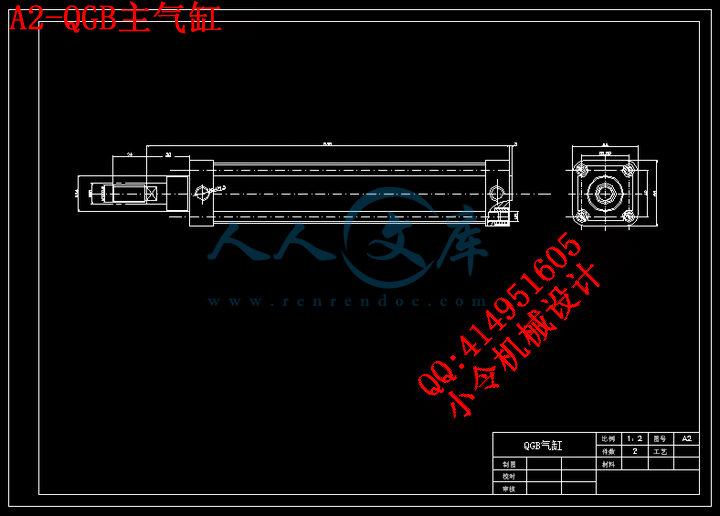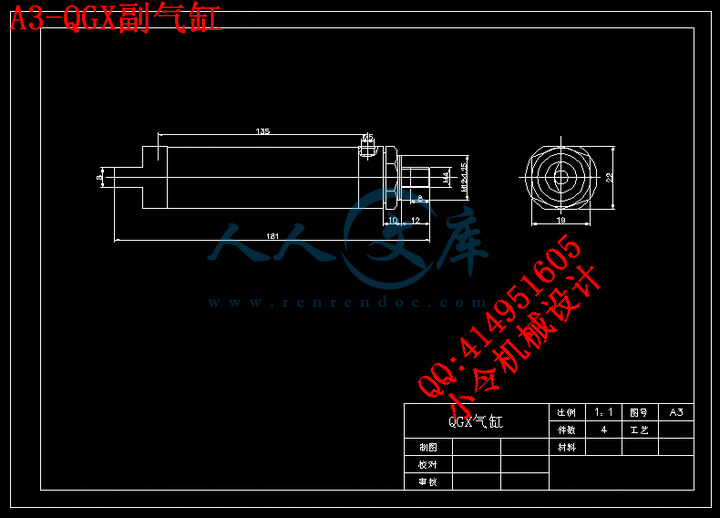【温馨提示】 购买原稿文件请充值后自助下载。
[全部文件] 那张截图中的文件为本资料所有内容,下载后即可获得。
预览截图请勿抄袭,原稿文件完整清晰,无水印,可编辑。
有疑问可以咨询QQ:414951605或1304139763
目录
1 绪论 1
1.1引言 1
1.2国外爬壁机器人研究现状 1
1.3国内爬壁机器人研究现状 2
1.4爬壁机器人的发展趋势 3
1.5课题的目的及意义 3
1.6课题内容及工作思路 4
2 机器人的结构设计 5
2.1 机构设计 5
2.2 动作原理 6
3 爬壁机器人的气压传动系统设计 7
3.1 气压控制回路设计 7
3.2 选择执行元件 8
3.3 真空发生器、过滤器、吸盘的选择 8
3.4选择控制元件 9
3.4.1选择类型 9
3.4.2选择主控阀 9
3.4.3 选择减压阀 9
3.5选择气动辅件 10
3.6 确定管道直径、验算压力损失 10
3.6.1 确定管径 10
3.6.2 验算压力损失 11
3.7 选择空压机 16
3.7.1 自由空气量的计算 16
3.7.2 气缸的理论用气量 16
3.7.3 选择空压机 17
4 单片机控制设计 18
4.1 AT89C2051单片机简介 18
4.2 单片机的接线 19
5 无线遥控电路设计 20
5.1 TX2/RX-2遥控集成电路简介 20
5.1.1 TX-2/RX-2遥控集成电路的特点 20
5.1.2 TX-2/RX-2电参数引脚功能 20
5.1.3 TX-2/RX-2引脚功能 21
5.2遥控发射、接收电路 23
6 软件设计 25
参考文献 31
致谢 32
爬壁机器人气压传动系统及控制硬件设计
学生姓名:曾巧芸 班级:050313
指导老师:袁坤
摘要:目前应用于实际的或文献报道的爬壁机器人的步行机构通常采用基于仿真原理的六足或四足等多足步行机构。本文根据具体要求采用了八足步进机构,设计了一种爬壁机器人的气压传动系统及控制硬件。本机器人的结构简单,由横纵两个垂直的机械结构组成,横向结构实现向左、向右的动作,纵向结构实现向上、向下的动作。该机器人机身采用有机玻璃制造,重量轻、易加工。系统是根据真空吸附原理设计的一个能在垂直墙面上通过脚步行进方式,在4个方向垂直移动的爬壁机器人及其控制系统。由气缸驱动机器人脚步的交替移动以实现在垂直表面的自由移动。控制系统采用单片机控制,通过接收无线遥控信号来实现上升、下降、向左、向右及停止五个基本动作的有序控制,为进一步实现复杂动作及实际应用打下了良好的基础。整个设计从机器人的本体结构开始,然后根据机器人的结构设计相应的气动回路,计算所需参数,选择气动气动系统的各执行元件、控制元件及辅件。再由机器人的动作原理选择单片机型,确定各引脚的接线。无线遥控系统选用了现在普遍使用的TX-2/RX-2,接收电路的引脚与单片机的引脚相连,接收电路接收发射电路发出的信号,通过单片机产生相应输出使机器人完成相应的动作。
关键词:爬壁机器人 气压传动 无线遥控 单片机控制
Wall-climbing robot and control of air pressure drive system and hardware design
Student name: Zeng Qiaoyun Class:050313
Supervisor: Yun Kun
Abstract:Currently applies to actual or reported in the literature of the foot wall-climbing robot usually based on simulation Principle or the six-legged quadruped walking and other agencies. In this paper, according to the specific requirements of the use of stepping foot eight institutions, located Of a wall-climbing robot's pneumatic drive system and control hardware. The robot has Simple structure,the horizontal and vertical components of the mechanical structure, horizontal structure to the left, right action, vertical structure upward and downward movements. The robot used plexiglass manufacturing body, light weight, easy processing. The system is based on the principle of the design of the vacuum adsorption. It is a vertical wall in the road on the way through the steps in the direction of vertical movement 4 wall-climbing robot and its control system. Control system uses a single-chip control, wireless remote control signal through the receiver to achieve an increase, decrease, left, right and stop of the five basic moves in an orderly control. It can further the realization of the complexity of action and is a time when the application has laid a good foundation.The whole design of the body structure from the beginning of the robot, and then in accordance with the structural design of the robot corresponding pneumatic circuit to calculate the required parameters, select pneumatic pneumatic system of the implementation of components, control components and accessories. Robot moves from the principle of choice-based single-chip, to establish the connection pin.Optional wireless remote control system is now widely used TX-2/RX-2, the receiving circuit and MCU pin connected to the pin, receiving circuit to receive signals from transmitter, through the single-chip output to enable the robot to produce complete the corresponding action.
Keywords: wall-climbing robot pneumatic transmission wireless remote control single-chip control
Signature of supervise:







 川公网安备: 51019002004831号
川公网安备: 51019002004831号